I myself am surprised I didn’t written this
post earlier because this pasta dish has been a classic in our family for many years. It
is so easy and quick to prepare yet so delicious! I have served it to our
friends on some informal occasions but – probably more importantly – it is a
hit with children.
When my daughters were small and they had their
friends over in our house, I could be almost sure that if I had cooked this meal,
all the children would eat it. But even now when they are so much older,
their (different) friends still enjoy it tremendously.
Another good point about this recipe is that it
can be adjusted to different needs without losing too much of its flavor. If you
or your children are not big fans of green peas, they can be omitted. And if
you want to cook it for a vegetarian, you can omit the ham – I made it that way
for my vegetarian daughter and although she was skeptical at the beginning and worried it wasn't going to be that tasty, she did enjoy it a lot (but I wouldn’t omit
both at the same time: the ham and the peas ;)).
INGREDIENTS (for 4 portions):
1 tbsp butter,
150g sliced cooked ham, cut into strips,
5 tbsp milk,
125g mascarpone cheese,
40g grated Parmesan cheese (plus extra for
serving),
180g green peas,
400g spaghetti, tagliatelle or linguine,
Salt and pepper.
METHOD:
- Boil salted water and when ready, cook the pasta al dente; 3 minutes before the end of cooking time add the green peas.
- On a medium heat melt the butter in a medium size frying pan, add the ham and fry for 1-2 minutes.
- Decrease the heat to low, add the milk, mascarpone and Parmesan, stir till the cheeses melt, season.
- Drain the pasta and green peas (reserve a few tbsps of cooking water); put them back to the pan and pour the sauce in.
- Stir well, adjust the seasoning, if necessary and serve straight away with some extra Parmesan cheese.





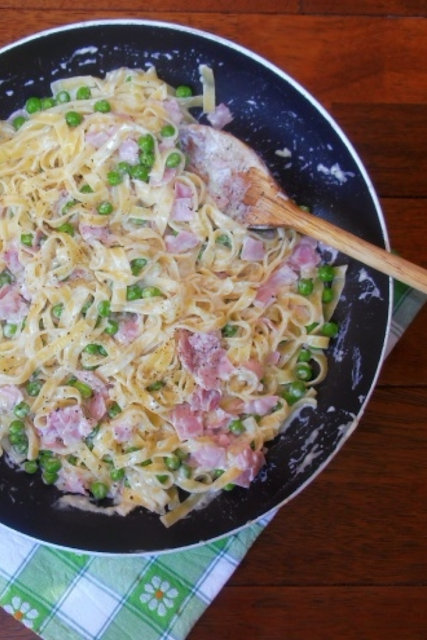
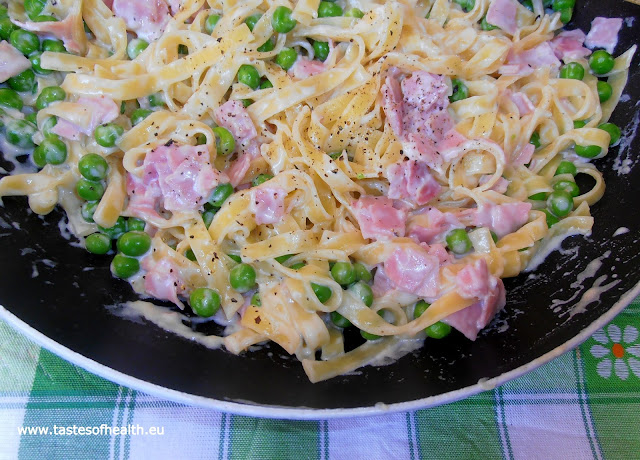
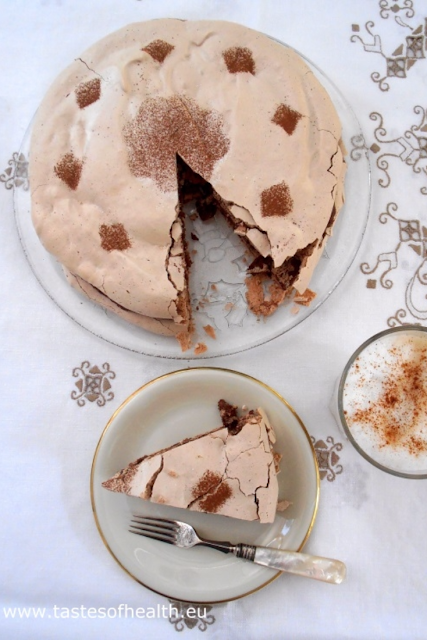
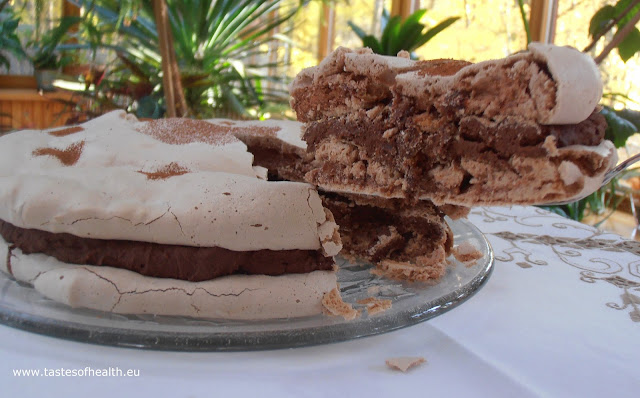
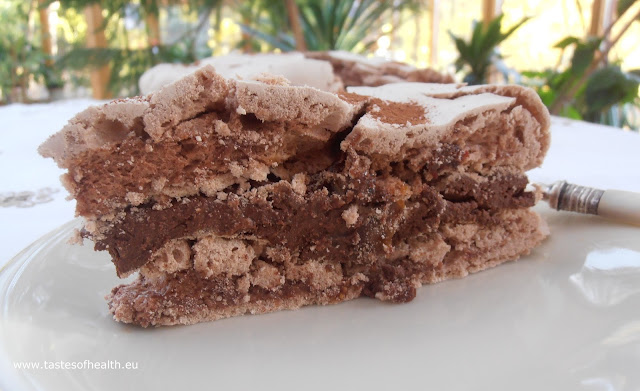
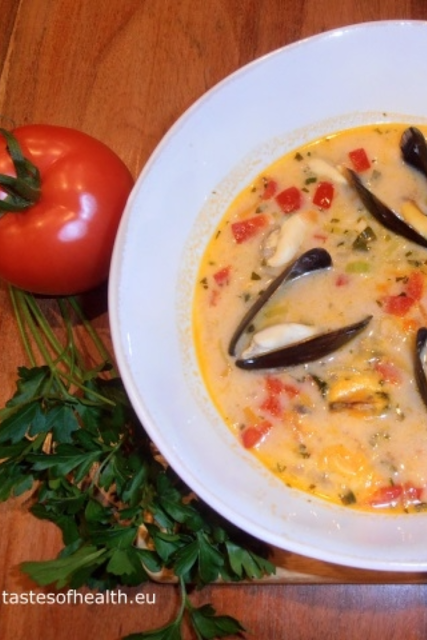

![Fruity Chicken [Korma Style] chicken, korma, curry, chicken korma, recipe, recipes, Indian](https://3.bp.blogspot.com/-5h9vLC9ZYZc/V0cTxqzdn1I/AAAAAAAABKg/HmM9OjqKcBQIBe70BUOqil7pAXiBDdx3gCLcB/s640/Fruity%2BChicken%2B2%2BPIN.png)
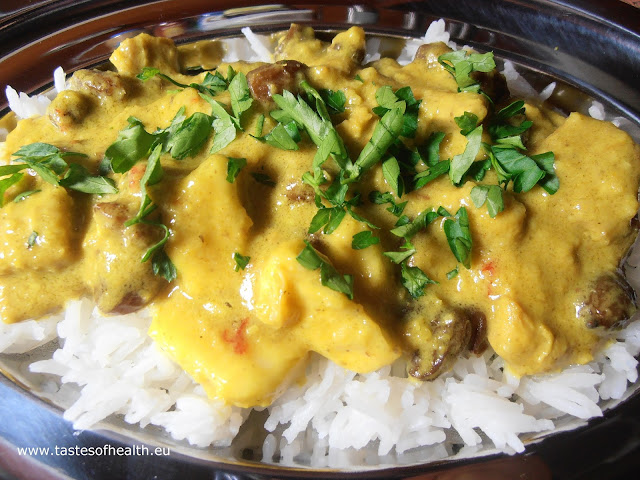
![Bolognese sauce [ragu] bolognese, Bolognese sauce, ragu, Italian, classic, Bolognese recipe, spaghetti bolognese, recipe, recipes](https://1.bp.blogspot.com/-JYC-6xD_Okg/V0cvA4YS_II/AAAAAAAABKw/iI5RsIcxQhI9bMYVH7AxHL4g-PHb3ZpwgCLcB/s640/Bolognese%2BSauce%2B1%2BPIN.png)
![Bolognese Sauce [ragu] bolognese, Bolognese sauce, ragu, Italian, classic, Bolognese recipe, spaghetti bolognese, recipe, recipes](https://2.bp.blogspot.com/-Jo5RBjVZlEA/VkNazSI8OoI/AAAAAAAAA0c/hpe8kX6BWC8/s640/ragu%2B2.jpg)
![Spicy Parsnip Soup [vegetarian] parsnip, soup, parsnip soup, curry, spicy parsnip soup, recipe, recipes, healthy](https://2.bp.blogspot.com/-HE2IYMQP25Q/V0cxPURFYCI/AAAAAAAABLA/pmxlBDCrkMo994VKtMaa9cTlAGr4gdjYACLcB/s640/Spicy%2BParsnip%2BSoup%2B1%2BPIN.png)
![Spicy Parsnip Soup [vegetarian] parsnip, soup, parsnip soup, curry, spicy parsnip soup, recipe, recipes, healthy](https://3.bp.blogspot.com/-e7QEnEO_GJA/V0cxOEjFf5I/AAAAAAAABK8/Eqbht8glROcq4D-WiSmX6K_5DouMVnsiACLcB/s640/Spicy%2BParsnip%2BSoup%2B3%2BOPTIMISED.jpg)
